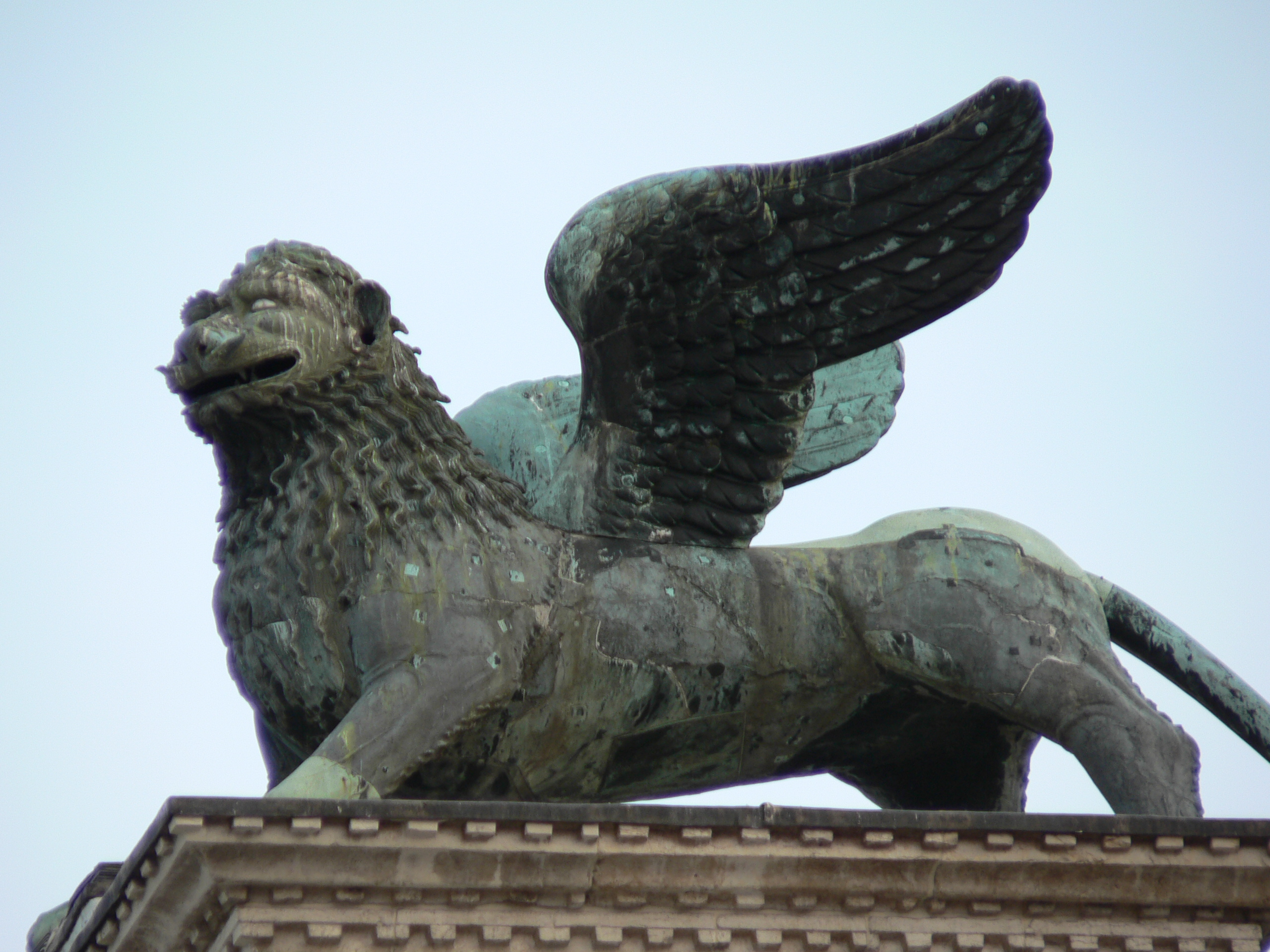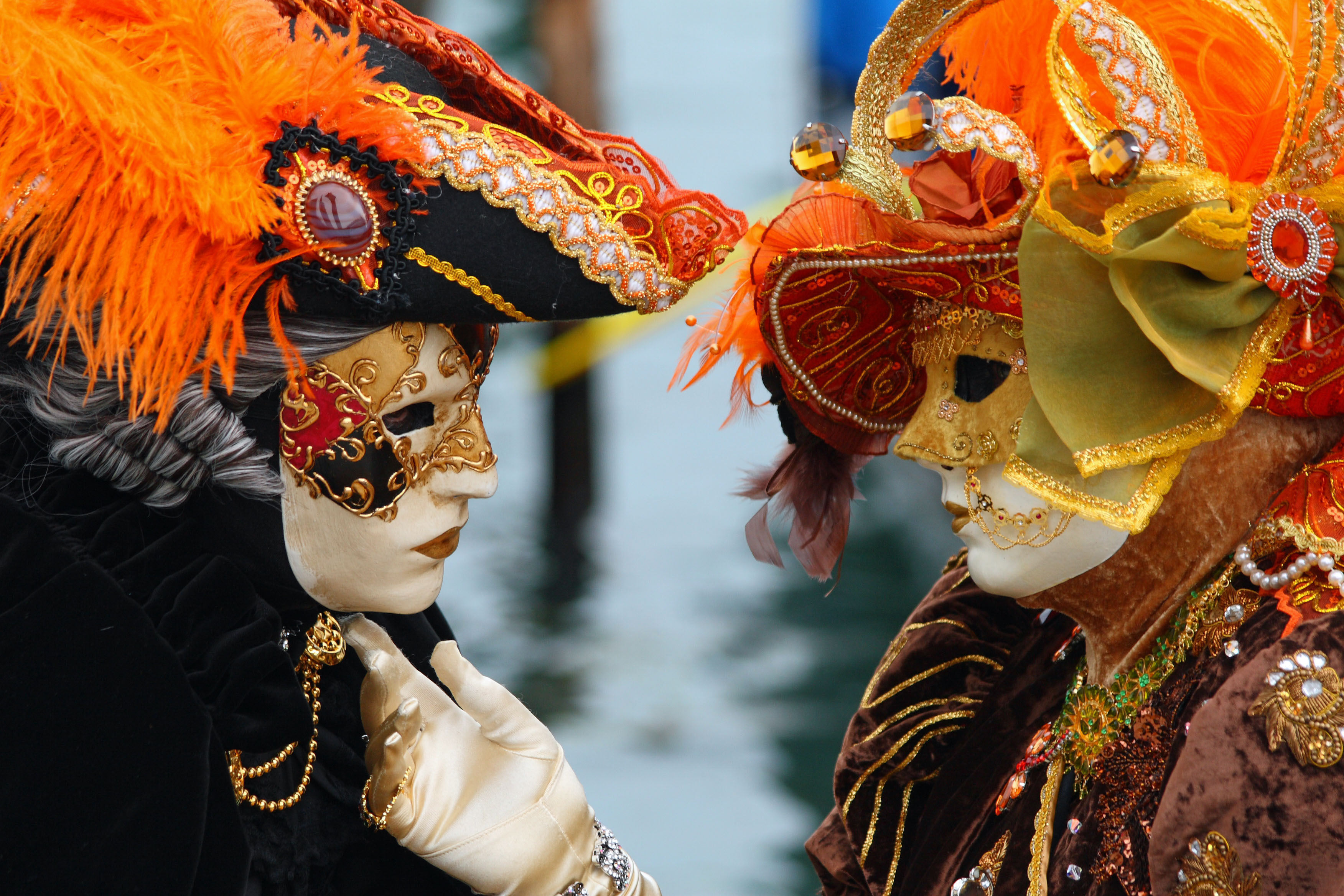 St. Theodore– Langdon mentions a statue of St. Theodore with a slain dragon in St. Mark’s Square. This statue represents the old patron saint of Venice, who was either St Theodore of Amasea or St Theodore Stratelates; controversy exists as to which one. St. Mark replaced Theodore as the patron saint when Venetians established their independence from East Byzantine and St. Theodore became seen as a symbol of the city’s subjugation to Constantinople. The current statue of St. Theodore which exists in St. Mark’s is not the original statue placed there in 1372, but rather a compilation of pieces placed there in the late 15th century.
St. Theodore– Langdon mentions a statue of St. Theodore with a slain dragon in St. Mark’s Square. This statue represents the old patron saint of Venice, who was either St Theodore of Amasea or St Theodore Stratelates; controversy exists as to which one. St. Mark replaced Theodore as the patron saint when Venetians established their independence from East Byzantine and St. Theodore became seen as a symbol of the city’s subjugation to Constantinople. The current statue of St. Theodore which exists in St. Mark’s is not the original statue placed there in 1372, but rather a compilation of pieces placed there in the late 15th century.
 Winged lion– A statue of a winged lion is described by Langdon as sitting atop a column at the gateway from St. Mark’s Square. This winged lion represents St. Mark, the author of the gospel of Mark, and is the symbol of Venice; as Langdon notes, it can be found throughout the city.
Winged lion– A statue of a winged lion is described by Langdon as sitting atop a column at the gateway from St. Mark’s Square. This winged lion represents St. Mark, the author of the gospel of Mark, and is the symbol of Venice; as Langdon notes, it can be found throughout the city.
 Horses of St. Mark’s– The Horses of St. Mark are a set of four bronze horse statues on a balcony above St. Mark’s Basilica. As Langdon notes, the horses were brought to Venice after being pillaged from Constantinople in 1204. However, the originals have been moved for preservation, while the ones described in the book that can be seen in the square are replicas.
Horses of St. Mark’s– The Horses of St. Mark are a set of four bronze horse statues on a balcony above St. Mark’s Basilica. As Langdon notes, the horses were brought to Venice after being pillaged from Constantinople in 1204. However, the originals have been moved for preservation, while the ones described in the book that can be seen in the square are replicas.
 The Tetrarchs statue– The Portrait of the Four Tetrarchs is a group of four statues placed in St. Mark’s Basilica. The portrait symbolizes the tetrarchic leadership of Rome from around 293 to 313. This statue was also brought to Venice after the plunder of Constantinople in 1204.
The Tetrarchs statue– The Portrait of the Four Tetrarchs is a group of four statues placed in St. Mark’s Basilica. The portrait symbolizes the tetrarchic leadership of Rome from around 293 to 313. This statue was also brought to Venice after the plunder of Constantinople in 1204.

Carnivale masks
Volto intero mask– A Gypsy woman is selling Venetian masks to Langdon and offers him a volto intero mask. This mask is white, covers the entire face enough to prevent the wearer from eating or drinking with it on, and is typically worn with a cloak and a tricorn.
Colombina mask– This mask, also being sold to Langdon by the Gypsy woman, is a Venetian half-mask, often elaborately decorated, which is held up to the face or secured by a ribbon.
Bauta mask– This mask, offered to Langdon by the Gypsy woman, was initially white, but in the current day is commonly gilded. The mask is characterized by a large nose and the absence of a mouth, and the wearer is able to eat and drink while wearing the mask.
Moretta– Moretta, which means “dark lady” or is also commonly referred to as “servetta muta” (“mute servant woman”) is a strapless black oval mask solely featuring wide eye holes, typically worn by aristocratic women.
“Sono molto belle, ma no, grazie.”– “They are very nice, but no thank you.” Langdon replies with this to the woman trying to sell him masks.